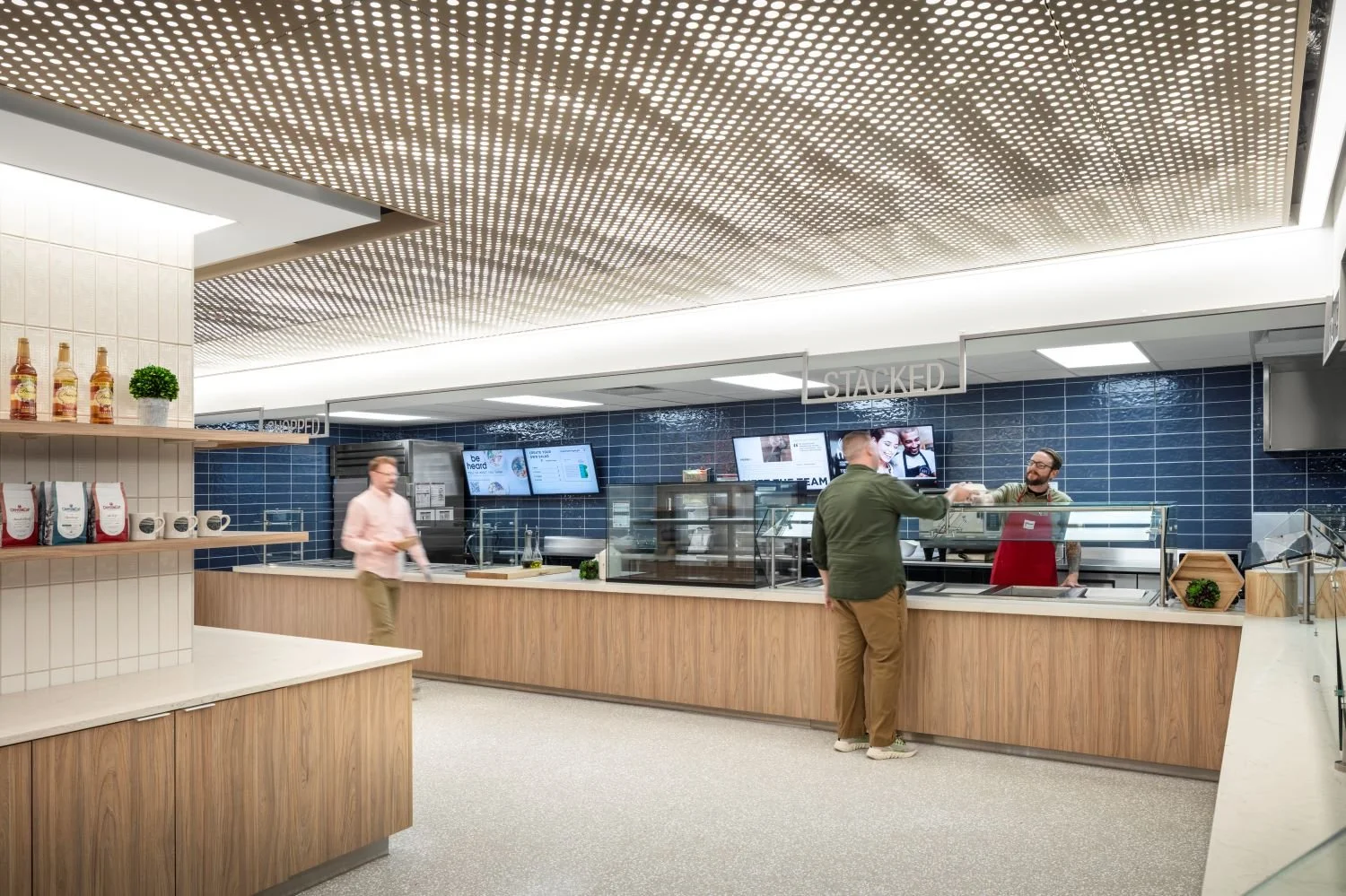Creating destinations, not just offices
The workplace is having an identity crisis. After decades of being simply where work happens, offices are now competing for attention with kitchen tables, coffee shops, and coworking spaces. The question isn't whether people will return to the office—it's whether we can give them compelling reasons to choose it.
This shift demands a fundamental rethinking of how we approach workplace design. We're no longer just space planners; we're experience architects crafting environments that must earn their place in people's daily lives.
From Function to Feeling
Traditional office design prioritized efficiency and hierarchy. Corner offices for executives, cubicles for everyone else, and conference rooms that felt more like interrogation chambers than collaboration spaces. But today's workforce—shaped by years of remote work flexibility—expects something entirely different.
The most successful workplace transformations understand this emotional dimension. When State Auto Insurance reimagined their Columbus headquarters, they didn't just shuffle furniture around. They recognized that their 1980s lobby wasn't just outdated—it was actively working against their culture. By creating versatile amenity spaces and adding an outdoor pavilion that connects to the city's Discovery District, they transformed their office from a place people had to be into one they wanted to be.
The Collaboration Imperative
Here's what we've learned: if work can be done effectively from home, the office needs to offer something fundamentally different. That something is human connection and collaborative energy. The future workplace must be designed around "intentional collision"—creating natural intersection points where ideas spark and relationships form.
This isn't about forcing interaction through open floor plans that strip away privacy. It's about thoughtful design that balances focused work areas with dynamic collaboration zones. State Auto's approach of replacing thousands of square feet of private offices with flexible huddle rooms and conference areas demonstrates this principle in action—they nearly doubled their workforce capacity while creating spaces that actually support how teams work together.
Flexibility Within Structure
One word dominates every client conversation: flexibility. But true flexibility isn't about creating spaces that can become anything—that leads to analysis paralysis. Smart workplace design provides "structured flexibility": clear frameworks that can adapt to changing needs without losing their essential character.
This means designing spaces with intentional boundaries that empower rather than overwhelm. Think modular furniture systems, multipurpose areas with defined functions, and technology infrastructure that supports various work modes without requiring a degree in IT to operate.
The Amenity Advantage
The modern workplace must compete not just with home offices, but with the entire ecosystem of places where people can be productive. That means incorporating amenities that make the daily experience genuinely better. We're talking about fitness centers that eliminate the evening gym commute, grab-and-go cafés that fuel afternoon productivity, and cafeterias that become social hubs rather than afterthoughts.
State Auto understood this completely. Their renovation included an employee fitness center, a coffee stand, their own corner mart, and that transformative cafeteria space—amenities that don't just make work more convenient, but create reasons to linger, connect, and see the office as a destination rather than an obligation. These aren't just nice-to-haves; they're strategic investments in employee satisfaction and retention.
The Strategic Imperative
The most important shift in workplace design is recognizing that space is strategy. State Auto's investment wasn't just about creating a nicer office—it was about positioning themselves as an innovative employer, reducing environmental impact, enabling new business partnerships, and supporting their commitment to downtown Columbus.
When workplace design aligns with business objectives, everyone wins. Employees get environments that support their best work. Organizations get tools for culture-building and talent retention. And designers get the opportunity to create spaces that truly matter.
The workplace revolution isn't about choosing between remote and in-person work. It's about designing offices so compelling that the choice becomes obvious.











